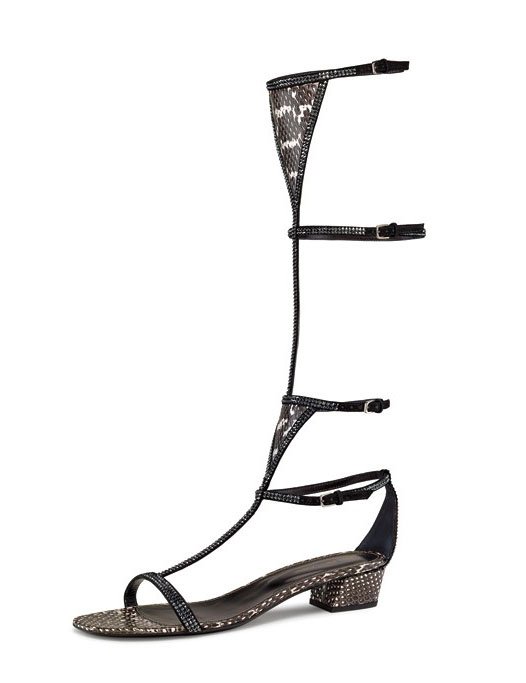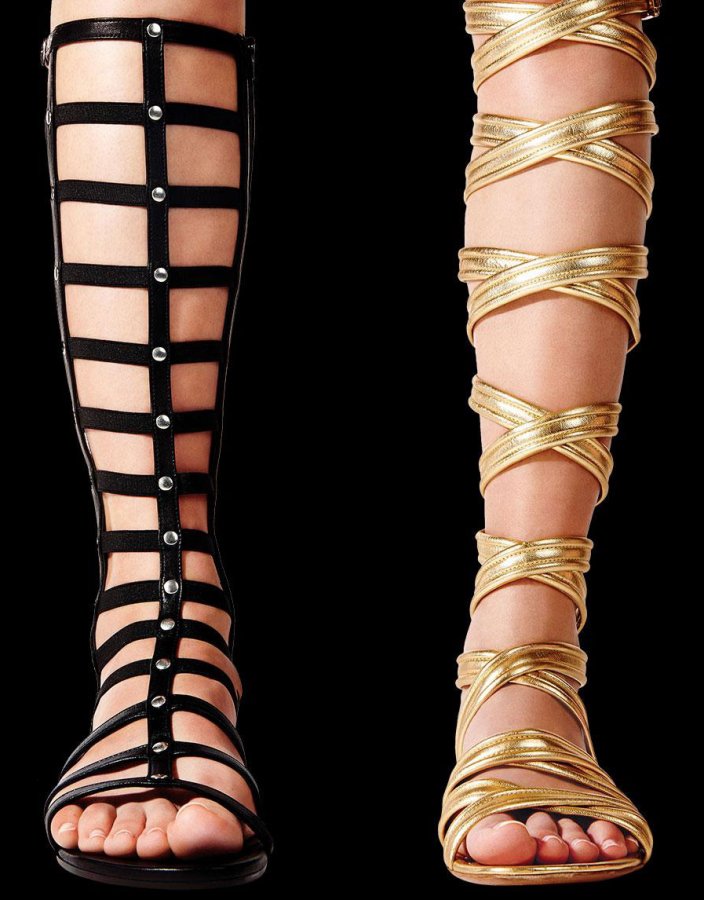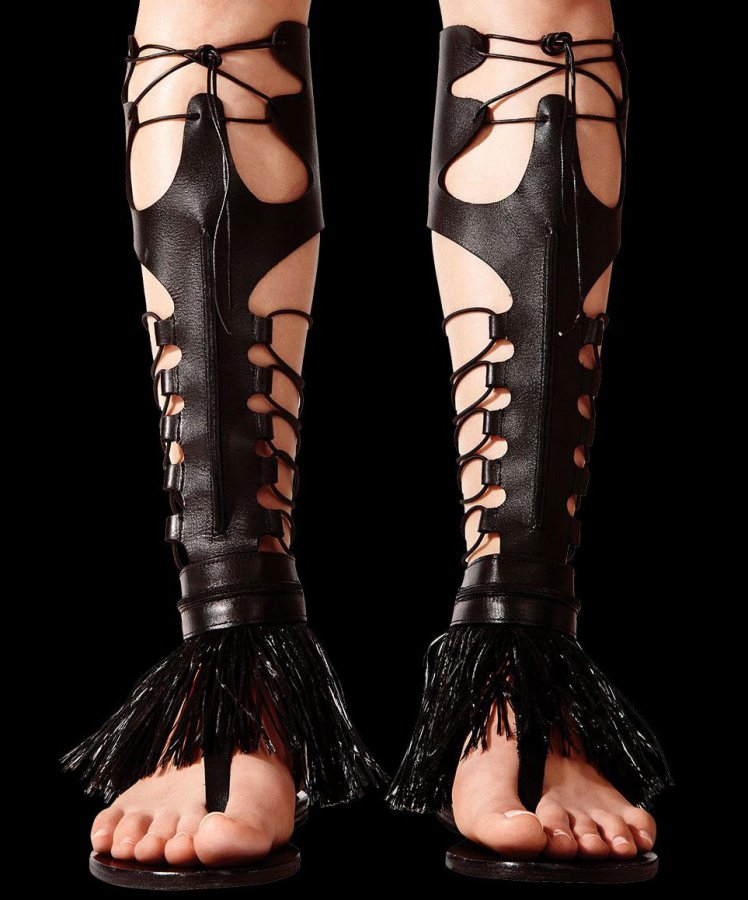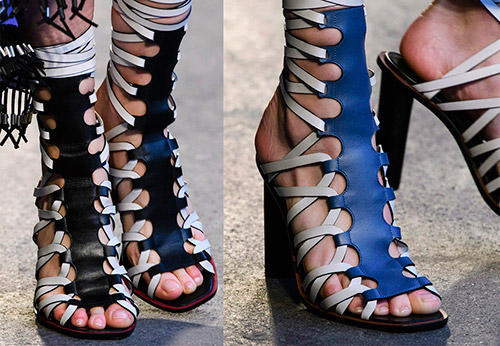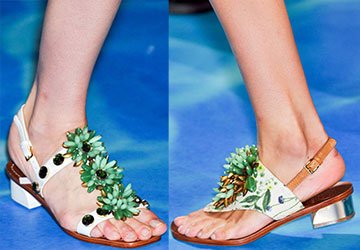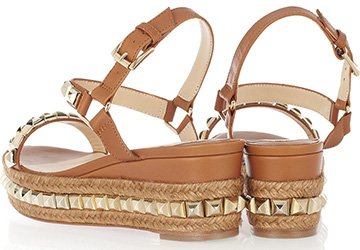Fashion spring-summer 2024
2024 Gladiator Sandals
Ancient Rome is an ancient civilization, at first covering only the Apennine Peninsula, and then a huge space from West to East, including Greece, from which it borrowed a lot, both in mythology, culture, art, and clothing. The shoes of the Romans, like the Greeks, were made of leather, usually strapped.
The Roman Empire is a southern country, so the shoes were as open as possible, especially the toes. Shoes reflected the social status of its owner: shoes of consuls, senators, warriors, as well as various options for sandals. In Greece, high strappy boots were called endromis, and the shoes of warriors in Rome were called kalliga, which were strappy sandals with open toes, usually with a closed heel and a height just above the ankle. The sandals of the Roman legionnaires almost completely repeated the calliga sandals, but were usually decorated with copper plaques and reached almost knee-high.
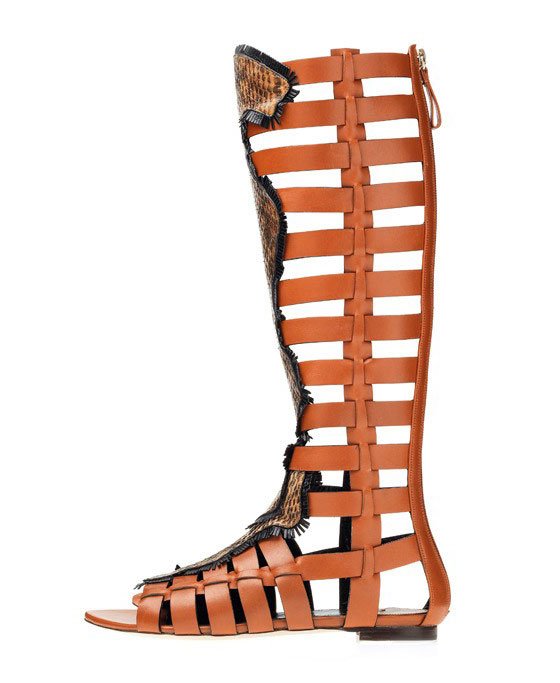
Daniele Michetti
The model of modern women's sandals, repeating the pattern of the sandals of the Roman legionnaires, is called the "gladiator". Gladiators, that is, prisoners of war or slaves who fought for the pleasure of the emperor and the nobility in the circus arena with wild animals, as well as among themselves. Now you know everything or almost everything about "gladiators" who continue to be fashionable and beloved footwear of women of the XXI century.
Although it should be noted that "gladiators" were already in the twentieth century, in the 70s. Then they went into the shadows a little, but they were remembered. And now they have not left the arena of fashion for many years now. And really, how can you not notice the girl, on whose legs "gladiators". These lightweight, beautiful shoes make you look even more youthful, slender, with a flying gait and slender legs, despite the fact that traditional "gladiators" are flat soles.
If you don't feel very comfortable without a heel, designers offer hybrid shoes, where you can see something from gladiators, but something from simple sandals.

Kotur

Daniele Michetti
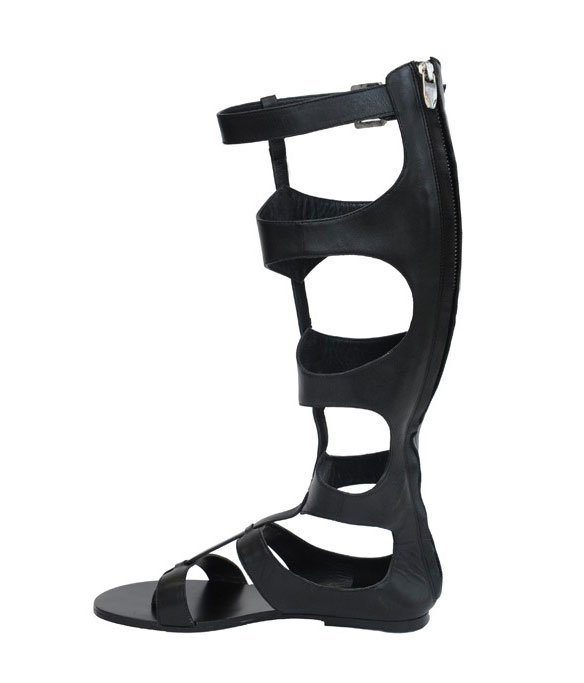

Tibi
Models from past collections will also remain relevant ...
Comments and Reviews
Add a comment
Rating news
Shades of clothing that make women look younger
What shades of hair make women younger: rules and photos
Funny wedding dresses - photos and ideas
12 most expensive down jackets for the winter
How to look 25 at 40: tips from supermodels
Beautiful schoolgirls
Anti-aging haircuts and hairstyles for women
Fashionable skirts for autumn and winter
Fashionable women's trousers for the cold season
Fashionable and stylish sandals for summer 2024
Spring-summer 2024
 Fashionable dresses and tops with thin spaghetti straps
Fashionable dresses and tops with thin spaghetti straps
 Bandana tops: how to wear stylishly and beautifully
Bandana tops: how to wear stylishly and beautifully
 How to put together the perfect men's wardrobe for the summer
How to put together the perfect men's wardrobe for the summer
 Trendy shorts for spring-summer 2024
Trendy shorts for spring-summer 2024
 Fashionable skirts for spring-summer 2024: a guide to online shopping
Fashionable skirts for spring-summer 2024: a guide to online shopping
 The most fashionable dresses spring-summer 2024: styles and colors
The most fashionable dresses spring-summer 2024: styles and colors
 Fashionable total look 2024: image ideas and trends
Fashionable total look 2024: image ideas and trends


